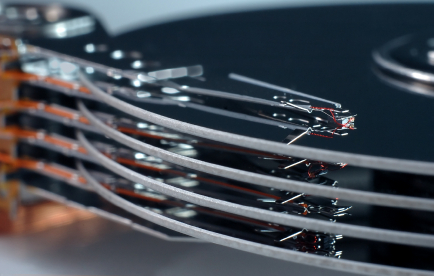Getting the Most Out of Your Hard Drive Space by Daniel Millard. At Security Camera King one of the most frequent questions I hear on a daily basis is “How much hard drive space do I need?” Well it depends and while it might seem like a simple enough question…to determine its answer there are a few questions you might want to answer for yourself. First we need to know “How many cameras do you have, want or will eventually have, total?” Then we must ask “How many days would you like to record for?” Then the question of detail follows, “What resolution would you like to view your recorded data in?” and “What frame rate would you like to view the cameras in?” Once these questions have been answered we can estimate a total hard drive space. Following this there are still a few tricks and tips that will let you figure out, how to conserve drive space and still accomplish our goals. Security Camera King has a CCTV Storage Calculator that will help you with any question concerning HDD (Hard Disk Drive) space.
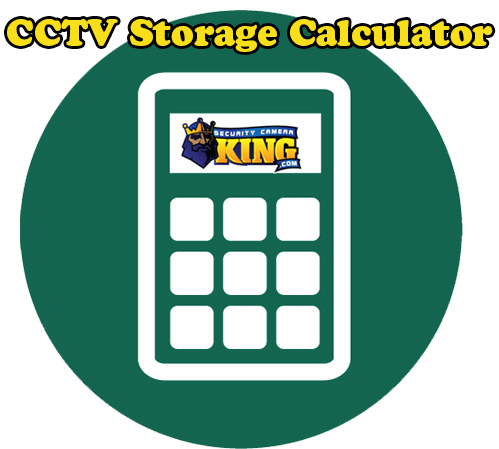
So the first question is “How many days would you like to record for?” The easiest way to figure out the minimum amount of days you need to record is by determining the maximum amount of time you find yourself away from your home or business and add a day. This allows you to safely watch all that you missed upon arriving home. Should you often find yourself unavailable to view this immediately upon returning or should you have incidents that need looking back further use the longer time frame for estimates. For example if you are liable for incidents up to 30 days prior then 31 days to record would be the recommended time as it allows you to protect your investment during these liable times.
Next major question is “What resolution would you like to view your recorded data in?” How large of an image do you want, how much detail do you want to observe. Remember that HD is primarily 720 and 1080 (one megapixel or two megapixel, respectably). Anything larger than that will allow for greater clarity of digital zoom but each size image requires greater and greater data usage and some higher resolutions may only be produced in lower frame rate. One major consideration should be what each individual camera will be used for. A camera that watches a doorway, for example, may need a moderate resolution but might not need a super high resolution as its only there to identify the individual, where as a camera looking over a field may have a very high resolution to allow for digital zoom. We will talk more about how to minimize data usage while still giving sufficient resolution later but this is an important factor to bear in mind.
Now, “What frame rate would you like to view the cameras in?” Or in other words how fluid do you want the video to be? Fluidity of video ranges between 1 frame to 30 frames per second. Remember when you used to draw little characters at the bottom of your text book and flip them to animate him? Video is still much the same a large quantity of pictures are taken and replayed in a second and that creates the video. Sometimes fluid video is unnecessary, it is simply enough to verify the person’s presence and identity other times it is imperative to see every tenth of a second. For example on a door cam you may just want to confirm a packaged was dropped off correctly and a high frame rate is unnecessary…but if you are watching a casino table you may need every fraction of a second to be recorded. This brings us to the final question before we get to the CCTV Storage Calculator.
The big question this article is meant to focus on. “How can we minimize the amount of hard drive space I need to accomplish my goals? Well the answer is more direct than you might think. Figuring which cameras need the higher frame rate and/or the higher resolution while minimizing the factors you don’t need whether they be resolution frame rate or motion detect itself is the real secret. For example a retail restaurant location with 16 cameras at full frames and full resolution with seven days to record would be:
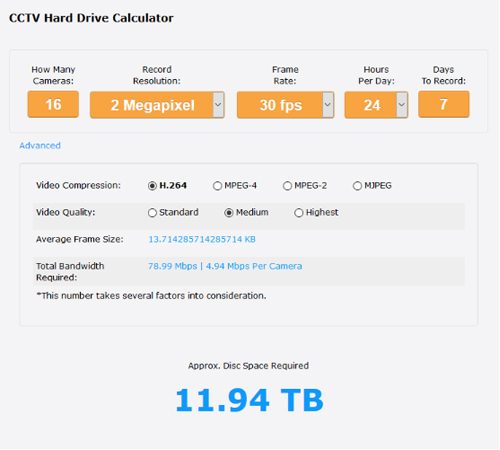
But if we use custom settings for the task 3 register cams may use :
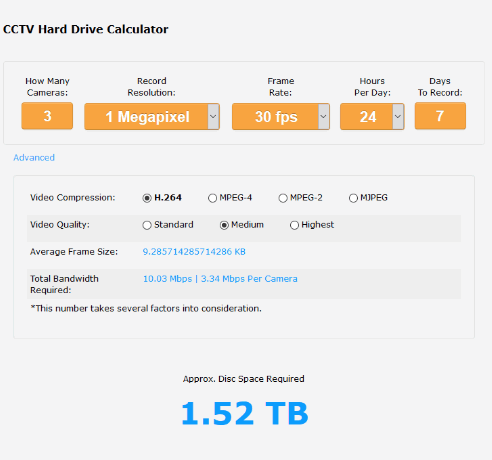
But the cameras in the 4 parking lot may be sufficient at (note motion detect is estimated at 17hours):
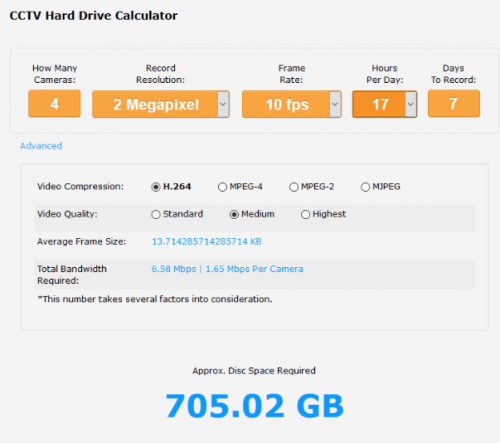
And the 8 other cameras in the restaurant would be (note motion detect is estimated at 17hours):
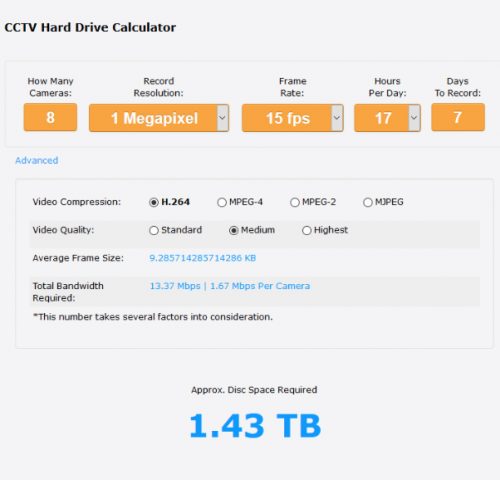
This would allow you to record your whole restaurant on a 4tb drive instead of need three 4tb drives or 12tb total. By splitting the cameras up in groups and prioritizing the settings each needs while minimizing the setting each doesn’t need we are able to use much less data and thus can get by with a much smaller drive. As you can see the advantage of setting your cameras by purpose can grant you a huge advantage and can save you 100s! In this case 12tb would have cost us almost 800 dollars! But buy minimizing the settings we were able to meet our needs with less than 250 dollars’ worth of drives. Give our sales department a call 1-866-573-8878 or myself (Daniel Millard) directly at 123. We’d be glad to help! Don’t forget to use our CCTV Storage Calculator.

